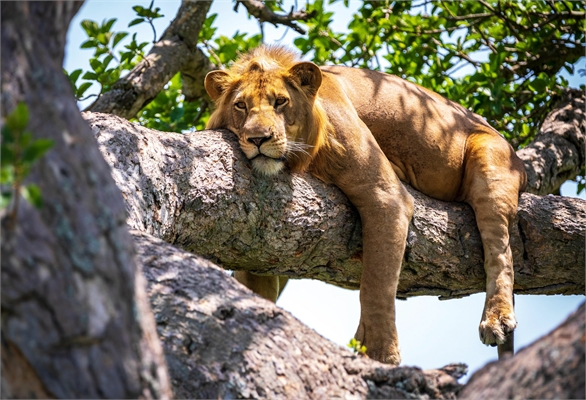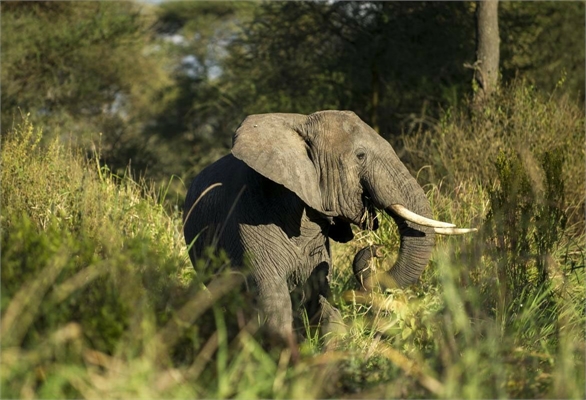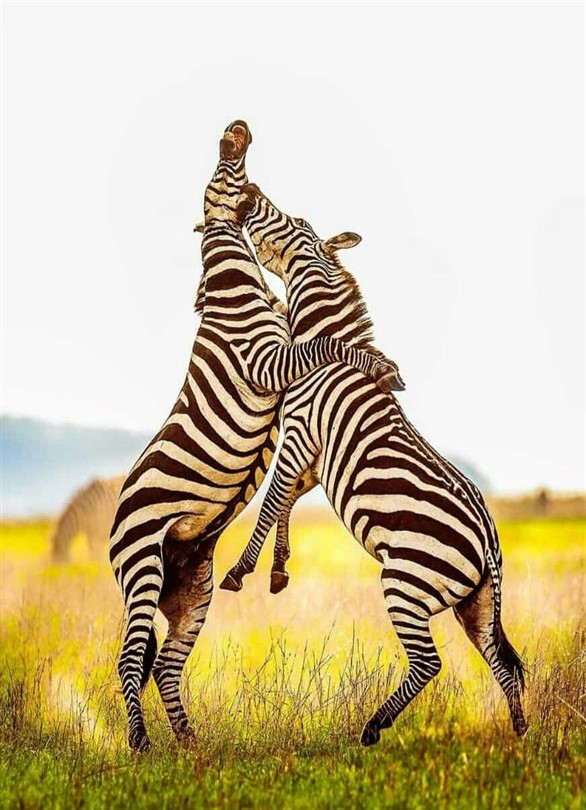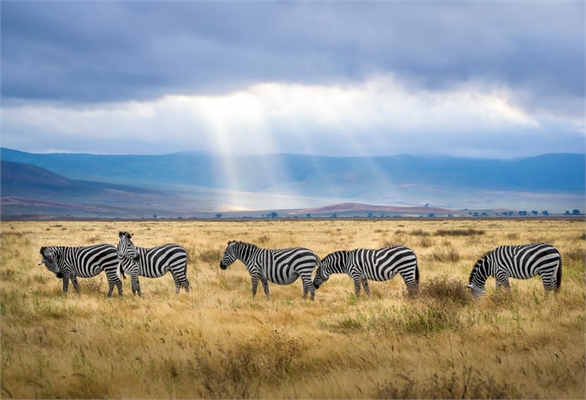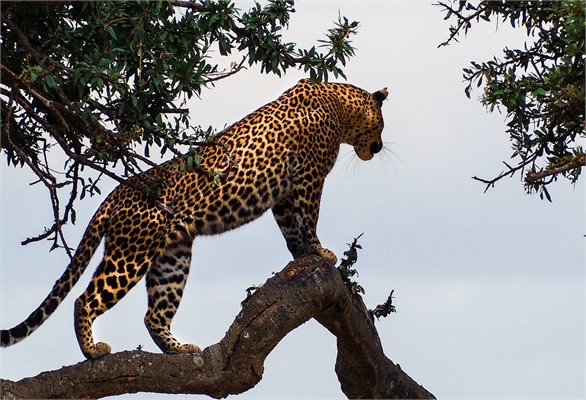Serengeti National Park
The Serengeti National Park, located in northern Tanzania, is a mesmerizing expanse of natural beauty and biodiversity that has captivated the world for generations. Spanning over 14,750 square kilometers, this UNESCO World Heritage Site is one of the most iconic and celebrated wildlife destinations on Earth. Its name, derived from the Maasai word "Siringet," meaning "endless plains," perfectly encapsulates the vastness of this wilderness. The Serengeti is not merely a geographical location; it is a living, breathing ecosystem, pulsating with life and teeming with stories of survival, migration, and adaptation.
As the sun rises over the Serengeti, the landscape transforms into a canvas of golden grasslands, acacia woodlands, and riverine forests, each shimmering under the morning light. The park's terrain is as varied as it is expansive. To the south, the seemingly infinite short-grass plains stretch uninterrupted, creating a stage for the world-famous Great Migration. In the central regions, known as the Seronera Valley, a network of rivers nourishes lush vegetation, providing a sanctuary for predators and prey alike. Further to the west, the landscape shifts to undulating hills and thickets, while in the north, the rugged terrain and verdant woodlands signal the proximity of the Maasai Mara in neighboring Kenya.
The Serengeti is most renowned for hosting the Great Migration, a breathtaking spectacle often described as the "greatest show on Earth." Each year, over two million wildebeest, accompanied by hundreds of thousands of zebras and gazelles, embark on a perilous journey in search of fresh grazing lands and water. This cyclical movement, dictated by the rains, is an epic tale of survival that sees the herds crossing crocodile-infested rivers, braving the open plains under the watchful eyes of predators, and birthing their young in the safety of the southern Serengeti's calving grounds. Witnessing this natural phenomenon is an awe-inspiring experience, a vivid reminder of the resilience and interdependence of life in the wild.
However, the Serengeti's allure extends far beyond the migration. The park is home to an astonishing array of wildlife, with over 70 large mammal species and more than 500 bird species calling it home. Here, the Big Five—lion, leopard, elephant, rhinoceros, and buffalo—roam freely, embodying the raw power and beauty of the African wilderness. Lions, often spotted lounging under the shade of acacias or stalking prey in the tall grasses, are particularly abundant in the Serengeti, making it one of the best places in the world to observe these majestic predators.
Leopards, elusive and solitary, are frequently seen resting in the branches of trees, their spotted coats blending seamlessly with the dappled sunlight. The vast elephant herds, with their gentle yet commanding presence, traverse the park's landscapes, while the critically endangered black rhino can occasionally be spotted in the northern regions, a testament to ongoing conservation efforts. Herds of buffalo graze in the open savannah, their imposing frames and curved horns a reminder of their resilience.
Beyond the iconic mammals, the Serengeti's skies and waterways are alive with life. Birds of prey, such as eagles and vultures, soar overhead, while colorful species like lilac-breasted rollers and flamingos add vibrant splashes of color to the scenery. Crocodiles and hippos dominate the rivers and waterholes, their presence a constant in the dynamic tapestry of predator and prey. The Serengeti’s biodiversity is not just a source of wonder but also a delicate balance that sustains the ecosystem's health and vitality.
The human history of the Serengeti is as rich as its natural heritage. The park lies at the heart of East Africa's cradle of humanity, with archaeological evidence from nearby Olduvai Gorge revealing early human habitation dating back millions of years. Today, the Maasai people, with their vibrant traditions and deep connection to the land, remain an integral part of the Serengeti's story. Their pastoral lifestyle, rooted in harmony with nature, offers a profound perspective on the coexistence of humans and wildlife.
Visitors to the Serengeti often describe it as a transformative experience. The park's vastness and silence create a sense of timelessness, where one can momentarily step out of the modern world and into an ancient rhythm of life. Game drives at dawn and dusk reveal the park's daily dramas, from cheetahs sprinting across the plains in pursuit of gazelle to herds of giraffes gracefully navigating the savannah. Nighttime in the Serengeti is equally enchanting, with the sky illuminated by countless stars and the air filled with the sounds of nocturnal creatures.
Despite its splendor, the Serengeti faces challenges that underscore the importance of conservation. Human encroachment, poaching, and climate change threaten the delicate balance of this ecosystem. However, collaborative efforts between the Tanzanian government, conservation organizations, and local communities aim to protect and preserve the park for future generations. Initiatives such as anti-poaching patrols, sustainable tourism practices, and community engagement programs are vital in ensuring that the Serengeti remains a haven for wildlife and a source of inspiration for all who visit.
The Serengeti is more than a national park; it is a symbol of Africa's untamed spirit and a reminder of the beauty and fragility of our planet. Its vast horizons invite introspection, its wildlife demonstrates the intricate web of life, and its landscapes evoke a deep sense of wonder. Whether one visits to witness the Great Migration, explore its diverse habitats, or simply bask in its unparalleled beauty, the Serengeti leaves an indelible mark on the soul. It is a place where nature reigns supreme, and the rhythms of life unfold with a rawness and authenticity that is increasingly rare in the modern world. For those fortunate enough to experience its magic, the Serengeti is not just a destination; it is a profound connection to the wild, a celebration of Earth's enduring vitality, and a sanctuary for the human spirit.

